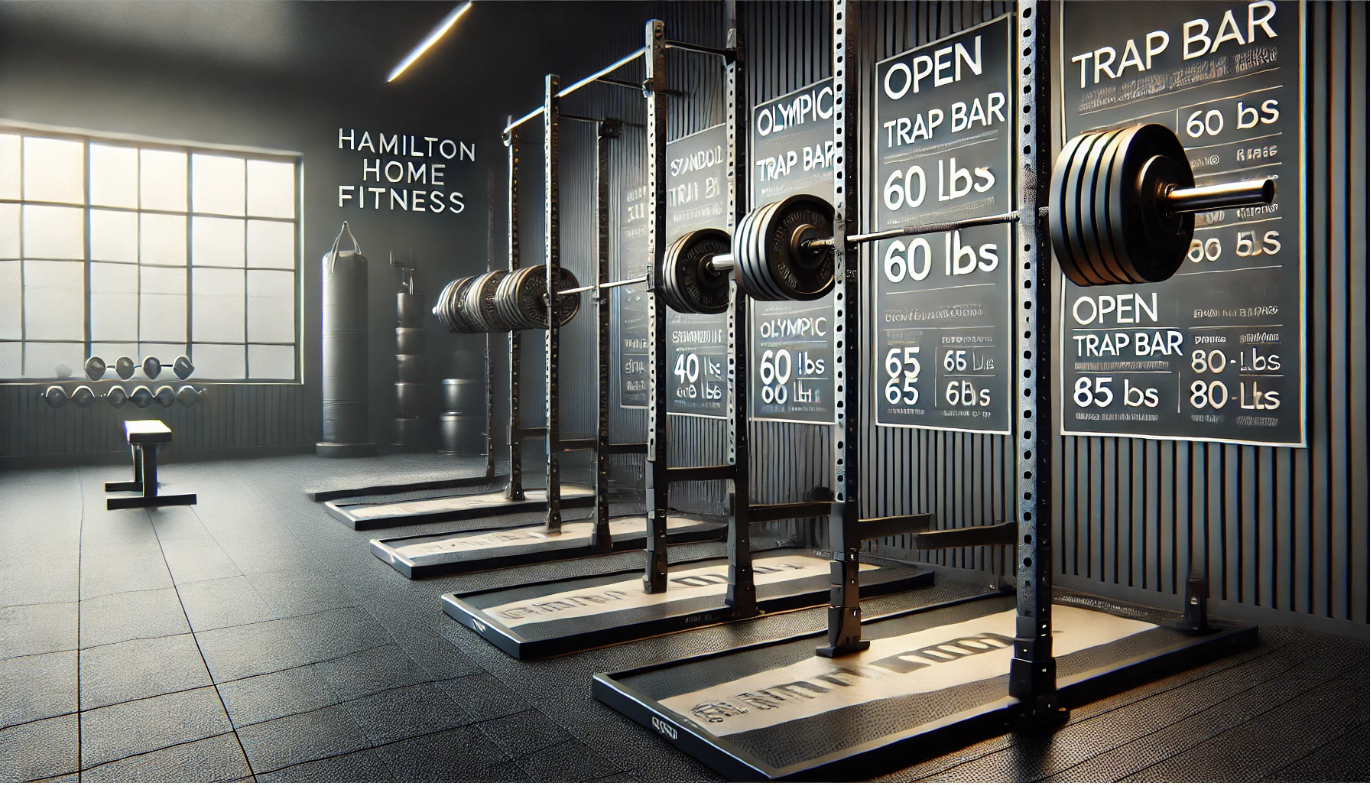Why Trap Bar Weight Matters More Than You Think
Whether you're new to strength training or a seasoned lifter refining your home gym setup, one question arises: How much does a trap bar weigh? It's not just a matter of curiosity; knowing the correct weight of your trap bar can make or break your training progress.
With more people investing in high-quality home fitness equipment, understanding the nuances of different gear is crucial. The trap bar, also known as the hex bar, is a staple for anyone looking to improve deadlift mechanics, reduce injury risk, and engage multiple muscle groups efficiently. But not all trap bars are created equal.
At Hamilton Home Fitness, precision, performance, and safety begin with knowledge. In this comprehensive guide, we'll explore the various types of trap bars, their average weights, what factors influence those weights, and why choosing the right trap bar is essential to your fitness journey.
Let's lift the confusion.
Understanding the Trap Bar: What Is It, and Why Use One?
A trap bar, or hex bar, is a specialized weightlifting barbell designed with a hexagonal or diamond-shaped frame. This unique shape allows you to stand inside the bar and hold the handles at your sides—unlike traditional straight barbells, where the weight is in front of you.
Benefits of using a trap bar:
- Reduced spinal load
- Improved biomechanics during deadlifts
- Better balance and posture
- Easier for beginners to learn proper lifting technique
These benefits have made the trap bar a mainstay in home gyms, functional training setups, and even professional athletic programs.
So, How Much Does a Trap Bar Weigh?
Let's get to the heart of the question. Trap bar weights vary, typically depending on the design, brand, and material used. Here's a breakdown:
Standard Trap Bar (Hex Bar)
- Average Weight: 45–55 lbs (20–25 kg)
- Features: Basic hexagonal design, fixed handles
- Common Use: Beginner to intermediate lifters
Olympic Trap Bar
- Average Weight: 60–70 lbs (27–32 kg)
- Features: Compatible with Olympic plates, solid steel construction
- Common Use: Intermediate to advanced athletes
Open Trap Bar
- Average Weight: 45–65 lbs (20–30 kg)
- Features: Open design for walking lunges, step-ups
- Common Use: Functional fitness, rehab, dynamic training
Heavy-Duty Trap Bar
- Average Weight: 70–90 lbs (32–41 kg)
- Features: Reinforced steel, rotating sleeves, elevated handles
- Common Use: Powerlifting, strength athletes
Hamilton Home Fitness Pro Tip: Always weigh your trap bar using a calibrated scale when possible. Manufacturer specs can vary by +/—5 lbs.
Factors That Influence Trap Bar Weight
Several variables determine how much a trap bar weighs:
1. Material Composition
High-tensile steel and reinforced alloys increase durability—and weight. Lighter bars may use hollow frames or lighter steel composites.
2. Handle Height and Knurling
Raised handles and aggressive knurling add extra steel to the overall weight. Some bars even have dual handles, adding complexity and mass.
3. Sleeve Construction
Rotating sleeves, longer sleeves for more plate capacity, and Olympic compatibility often mean a heavier base bar.
4. Bar Design (Open vs Closed)
Open trap bars offer more versatility but often add weight due to the reinforced structural design.
5. Brand Variations
Though we at Hamilton Home Fitness focus on top-tier, professional-grade trap bars, be aware that cheaper brands might save on material, affecting performance and weight.
Why Knowing the Weight Matters
You wouldn't guess your squat numbers—so why guess your bar weight?
Accurate load tracking is essential for the following:
- Progressive overload
- Recovery planning
- Strength benchmarks
- Injury prevention
Using the wrong assumption can lead to stalled progress or even overtraining. For example, assuming your trap bar is 45 lbs when it's 60 lbs could skew your programming by as much as 15–20%.
Choosing the Right Trap Bar for Your Goals
At Hamilton Home Fitness, we offer a curated selection of premium trap bars designed for performance, comfort, and longevity. Here's how to choose the right one:
For Beginners:
- Weight Range: 45–55 lbs
- Design: Basic hex shape, fixed handles
- Purpose: Learn deadlifts, shrugs, and basic lifts
For Intermediate Lifters:
- Weight Range: 55–70 lbs
- Design: Dual handles, improved knurling, Olympic sleeves
- Purpose: Add intensity, improve form
For Functional Trainers:
- Weight Range: 50–65 lbs
- Design: Open bar, lightweight but sturdy
- Purpose: Lunge walks, step-ups, multidirectional training
For Strength Athletes:
- Weight Range: 70–90 lbs
- Design: Reinforced steel, rotating sleeves
- Purpose: Max effort lifts, heavy deadlifts, shrugs
Actionable Tips: How to Maximize Trap Bar Use
1. Program It Strategically
Incorporate the trap bar into strength phases, especially for deadlift variations. It is great for high-volume days due to reduced lumbar stress.
2. Use for Dynamic Movements
Try loaded carries, lunges, and jumps to build functional strength.
3. Track Load Precisely
Weigh your trap bar and adjust your training log accordingly.
4. Prioritize Quality Equipment
Investing in a high-grade bar from Hamilton Home Fitness ensures safety, durability, and performance.
5. Clean and Maintain Regularly
Wipe down your bar, and inspect knurling and oil sleeves as needed to extend their lifespan.
Research & Sources
To ensure you're getting the most accurate and credible information, we referenced:
- National Strength and Conditioning Association (NSCA)
- American Council on Exercise (ACE)
- Journal of Strength and Conditioning Research
- Strength training equipment reviews and comparative studies
- First-hand data from Hamilton Home Fitness customer feedback and product testing
These sources helped us understand how trap bar design influences performance, safety, and training results.
Frequently Asked Questions
Q1: How can I tell how much my trap bar weighs?
Use a bathroom or shipping scale. Step on it alone, then on it, holding the trap bar. Subtract the difference.
Q2: Is a trap bar better than a barbell for deadlifts?
It's not necessarily better—just different. It reduces lower back strain and allows more quad engagement, which can be great for some lifters.
Q3: Can I use a trap bar for squats?
Absolutely! Trap bars are versatile and can be used for squats, lunges, and farmer's carries.
Q4: Are trap bars suitable for beginners?
Yes. They're especially beneficial for those learning from and avoiding excessive spinal load.
Q5: Does every trap bar weigh the same?
No. Trap bar weights range from 35 to over 90 lbs, depending on the design and build. Always check the specs or weigh your bar.
Conclusion: Lift Smarter with Hamilton Home Fitness
Understanding how much a trap bar weighs is about more than numbers—it's about training smart, staying safe, and maximizing gains. Whether upgrading your garage gym or starting from scratch, precision in your equipment choice will define your results.
At Hamilton Home Fitness, we go beyond selling equipment—we provide knowledge, support, and the industry's most advanced tools to empower your fitness journey. Our premium-grade trap bars are built for real performance, tested by real athletes, and trusted by thousands of satisfied home gym owners.
Ready to train smarter? Visit HamiltonHomeFitness to explore our trap bar collection and other elite home fitness equipment.
Comment below if you have more questions or want personalized recommendations—and don't forget to share this guide with a fellow fitness enthusiast!







